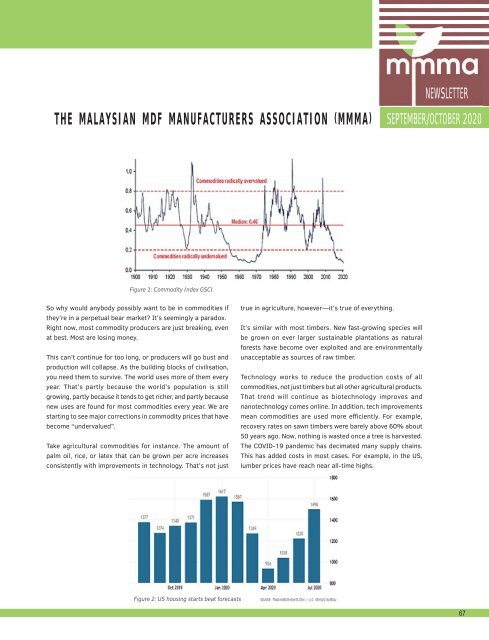Panels & Furniture Asia September/October 2020
Panels & Furniture Asia (PFA) is a leading regional trade magazine dedicated to the woodbased panel, furniture and flooring processing industry. Published bi-monthly since 2000, PFA delivers authentic journalism to cover the latest news, technology, machinery, projects, products and trade events throughout the sector. With a hardcopy and digital readership comprising manufacturers, designers and specifiers, among others, PFA is the platform of choice for connecting brands across the global woodworking landscape.
Panels & Furniture Asia (PFA) is a leading regional trade magazine dedicated to the woodbased panel, furniture and flooring processing industry. Published bi-monthly since 2000, PFA delivers authentic journalism to cover the latest news, technology, machinery, projects, products and trade events throughout the sector. With a hardcopy and digital readership comprising manufacturers, designers and specifiers, among others, PFA is the platform of choice for connecting brands across the global woodworking landscape.
You also want an ePaper? Increase the reach of your titles
YUMPU automatically turns print PDFs into web optimized ePapers that Google loves.
NEWSLETTER<br />
THE MALAYSIAN MDF MANUFACTURERS ASSOCIATION (MMMA)<br />
SEPTEMBER/OCTOBER <strong>2020</strong><br />
Figure 1: Commodity Index GSCI<br />
So why would anybody possibly want to be in commodities if<br />
they’re in a perpetual bear market? It’s seemingly a paradox.<br />
Right now, most commodity producers are just breaking, even<br />
at best. Most are losing money.<br />
This can’t continue for too long, or producers will go bust and<br />
production will collapse. As the building blocks of civilisation,<br />
you need them to survive. The world uses more of them every<br />
year. That’s partly because the world’s population is still<br />
growing, partly because it tends to get richer, and partly because<br />
new uses are found for most commodities every year. We are<br />
starting to see major corrections in commodity prices that have<br />
become “undervalued”.<br />
Take agricultural commodities for instance. The amount of<br />
palm oil, rice, or latex that can be grown per acre increases<br />
consistently with improvements in technology. That’s not just<br />
true in agriculture, however—it’s true of everything.<br />
It’s similar with most timbers. New fast-growing species will<br />
be grown on ever larger sustainable plantations as natural<br />
forests have become over exploited and are environmentally<br />
unacceptable as sources of raw timber.<br />
Technology works to reduce the production costs of all<br />
commodities, not just timbers but all other agricultural products.<br />
That trend will continue as biotechnology improves and<br />
nanotechnology comes online. In addition, tech improvements<br />
mean commodities are used more efficiently. For example,<br />
recovery rates on sawn timbers were barely above 60% about<br />
50 years ago. Now, nothing is wasted once a tree is harvested.<br />
The COVID-19 pandemic has decimated many supply chains.<br />
This has added costs in most cases. For example, in the US,<br />
lumber prices have reach near all-time highs.<br />
Figure 2: US housing starts beat forecasts<br />
67


















